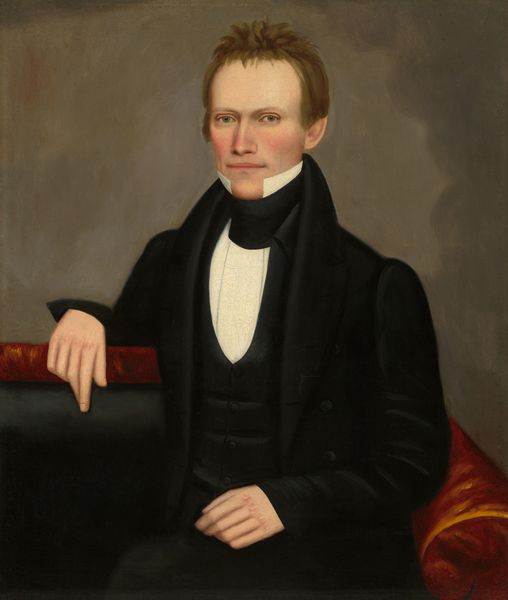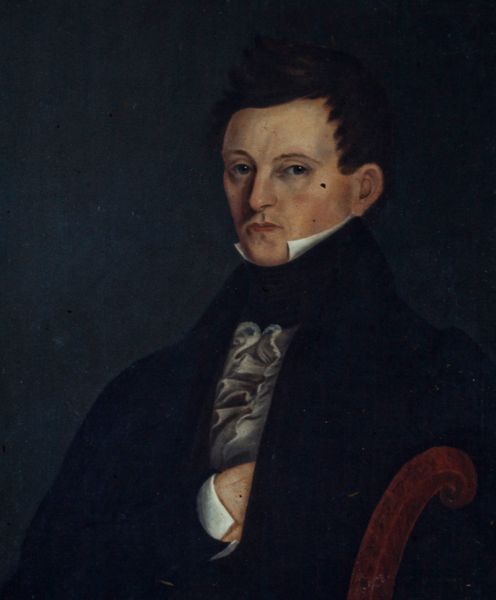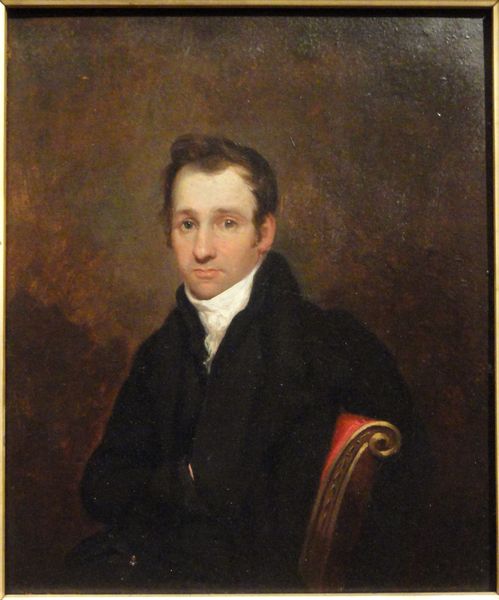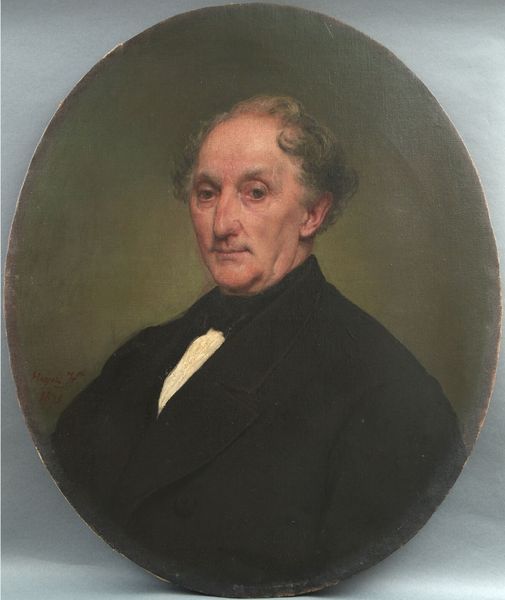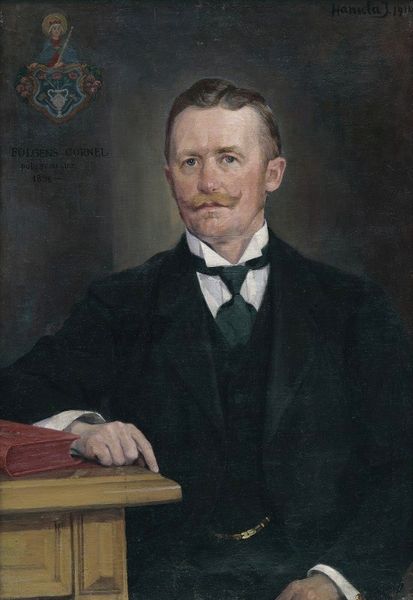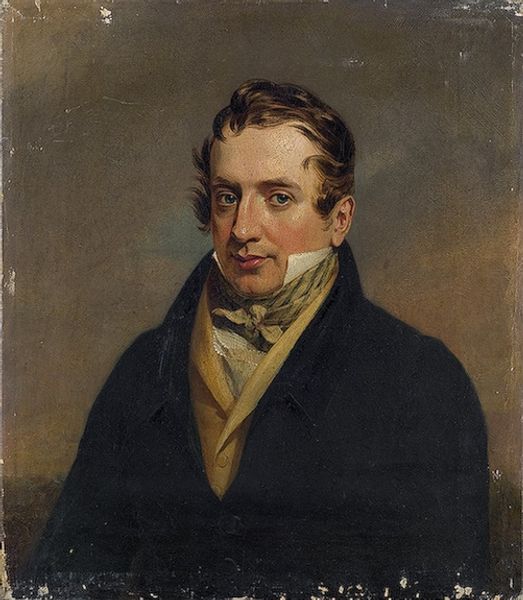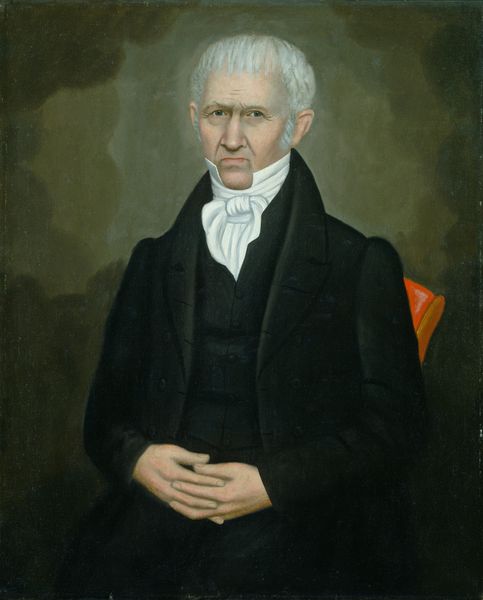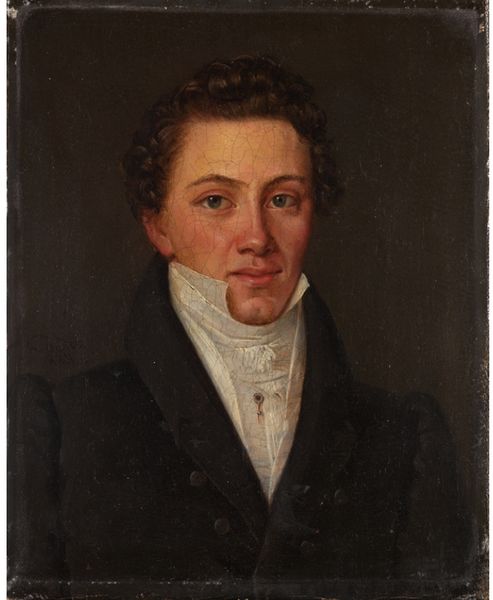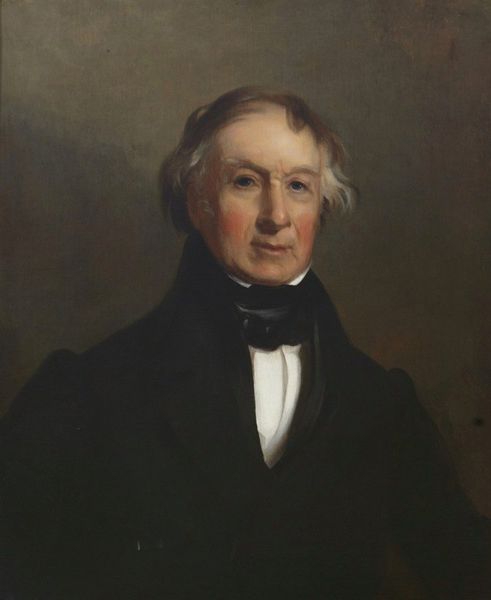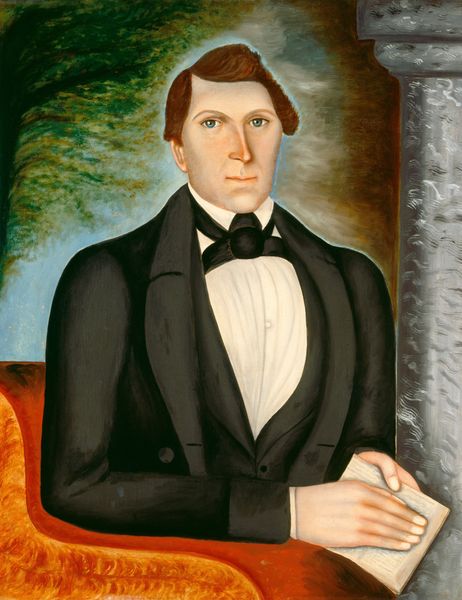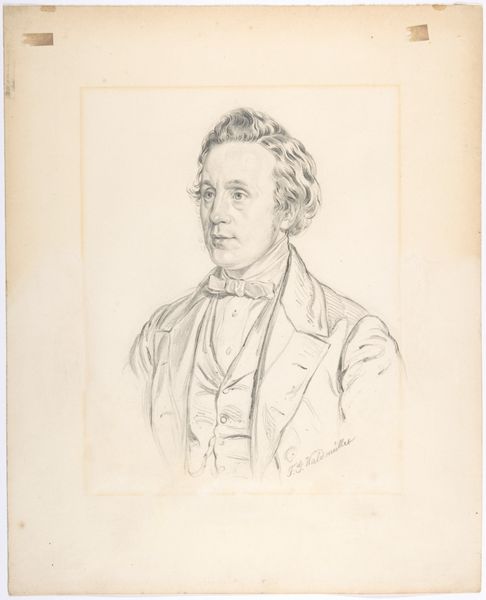
painting, oil-paint
#
portrait
#
painting
#
oil-paint
#
genre-painting
#
academic-art
#
realism
Dimensions: overall: 79.7 x 64.5 cm (31 3/8 x 25 3/8 in.) framed: 94 x 78.4 x 5.4 cm (37 x 30 7/8 x 2 1/8 in.)
Copyright: National Gallery of Art: CC0 1.0
Curator: Royall Brewster Smith's rendering of "John G. Read," crafted in 1833, is an oil painting that just breathes composure. What leaps out to you, from a making and materiality standpoint? Editor: It's… striking. Not beautiful in a conventional way, but imposing. The texture of the green background feels almost like crushed velvet—it pulls you right in, then the stiffness of the suit feels restrictive. What about you? Curator: Something about his pale face against the green… a soul trying to break free of… what, societal constraint? I always feel like early 19th-century portraiture is holding its breath. Editor: Right. And think about the materiality here. This wasn’t mass production. Every layer of that oil paint, carefully mixed pigments, each brushstroke deliberate in creating an image of this man for posterity. Consider the economic realities underpinning such a commission; access to such materials would denote access to other material privilege. Curator: And there's the book he's holding. Knowledge as a prop? I find the way he clutches it interesting...like he's hiding something. A secret only *he* knows is between the pages. The book itself, it looks heavy, you know? Like weighty knowledge. Editor: It does. And it invites a ton of questions. Who bound the book? What type of labor created the paper, ink, and binding? What can this seemingly mundane book holding suggest of its value as it represents knowledge or economic progress? These material components carry implicit meaning, of access. Curator: What a picture reveals, and conceals! This artwork offers an uncanny and intimate connection, really makes you question our fleeting existence. Editor: Absolutely. By attending to both the representation *and* the physical reality of the painting, we can start to unlock some richer insights into the complexities of identity, production and social position in 1833. It gives pause for contemplation, even today.
Comments
No comments
Be the first to comment and join the conversation on the ultimate creative platform.
